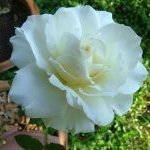Where Are All The Birds?
-
Recently Browsing 0 members
- No registered users viewing this page.
-
Topics
-
-
Popular Contributors
-
-
Latest posts...
-
0
Thai Pensioner Scammed 51k Baht in Silicone Doll Fraud
Picture courtesy of Komchedleuk In a disheartening tale from Udon Thani, a 70-year-old man, referred to as Tony, found himself the victim of an online scam after shelling out 51,000 baht for a silicone doll that never arrived. The retired contractor, feeling isolated after returning to Thailand, fell for a seemingly legitimate offer he encountered on Facebook. The advertisement promised “beautiful silicone dolls delivered nationwide,” featuring images of lifelike models with attributes such as adjustable limbs and “real-feel” skin. Encouraged by these claims, Tony believed the doll could alleviate his loneliness. “I’d been single for 22 years. The advertisement showed a stunning Eurasian model, and I thought she could keep me company,” he explained. Lured by the promise of a discount, Tony transferred 51,000 baht upfront, expecting discreet delivery. However, that was where his dream ended — with no doll and no responses from the seller. “They stopped replying to my messages. No tracking number, no confirmation, nothing,” he lamented, showcasing chat screenshots as evidence. Tony now plans to file a complaint with the Cyber Police in Udon Thani, providing transaction records and communications with the scammer. His unfortunate experience highlights the widespread issue of scams involving adult products, which occupy a legal grey area in Thailand. While the import and sale of sex toys are technically banned under the Customs Act, enforcement is inconsistent. Online sellers often skirt these laws, advertising products ranging from vibrators to full-body dolls. Tony’s ordeal underscores the risk involved in such transactions. “I’m sharing my experience to prevent others from being deceived. Loneliness isn’t something to laugh at,” Tony stated, hoping his story will prompt tighter regulation of online sales and bring attention to the murky market for adult items. Experts in cybercrime caution that these scams are becoming more prevalent, often targeting the elderly and socially isolated with fake profiles and false promises. A spokesperson for the Thai Cyber Police advised the public to remain vigilant and report any dubious sellers. Having learned a harsh lesson, Tony now urges others to exercise caution. “Next time, I’ll think twice before clicking ‘order now.’” Adapted by ASEAN Now from The Thaiger 2025-07-04 -
109
What do locals think of foreigners living in rural parts of Thailand on very modest budgets?
You have started most of them recently or hog other's topics in order to get your post count up. -
68
Will you be using Trumps new line of perfumes for men?
Proving you're not immature by queerbaiting, name calling and incorrect aspersions. Pathetic. -
109
What do locals think of foreigners living in rural parts of Thailand on very modest budgets?
Yes for once I can agree with you that you are a genuine fake. -
4
Shipping 200-300 KG of goods from Thailand to United States, please help
I'll ask the mods to move to appropriate forum. You should get better feedback -
23
'Disgraceful’: Critics blast Trump for latest move 'doing Putin’s bidding’
Interesting analogy. However, one could substitute 'The USA', 'Italy' or countless other existing countries for 'The Confederacy'.
-
-
Popular in The Pub




.thumb.jpg.3ee24d9400fb02605ea21bc13b1bf901.jpg)


.thumb.jpeg.d2d19a66404642fd9ff62d6262fd153e.jpeg)



Recommended Posts
Create an account or sign in to comment
You need to be a member in order to leave a comment
Create an account
Sign up for a new account in our community. It's easy!
Register a new accountSign in
Already have an account? Sign in here.
Sign In Now